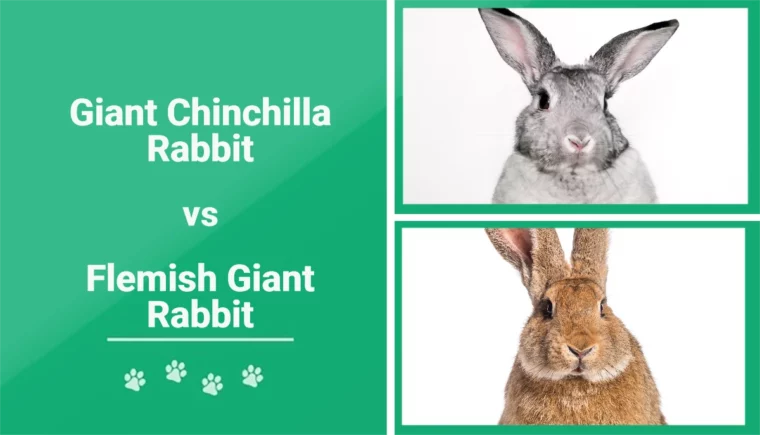
Click to Skip Ahead
Both the Giant Chinchilla rabbit and the Flemish Giant rabbit are just as their names suggest: giant! That is, compared to the common household pet rabbits that most of us know and love. All giant rabbits originate from Flemish Giants, and it is no different for the Giant Chinchilla rabbit. However, there are a few differences between these two cousin breeds that should be explored by those who are curious or are thinking about adopting one or the other.

Visual Differences
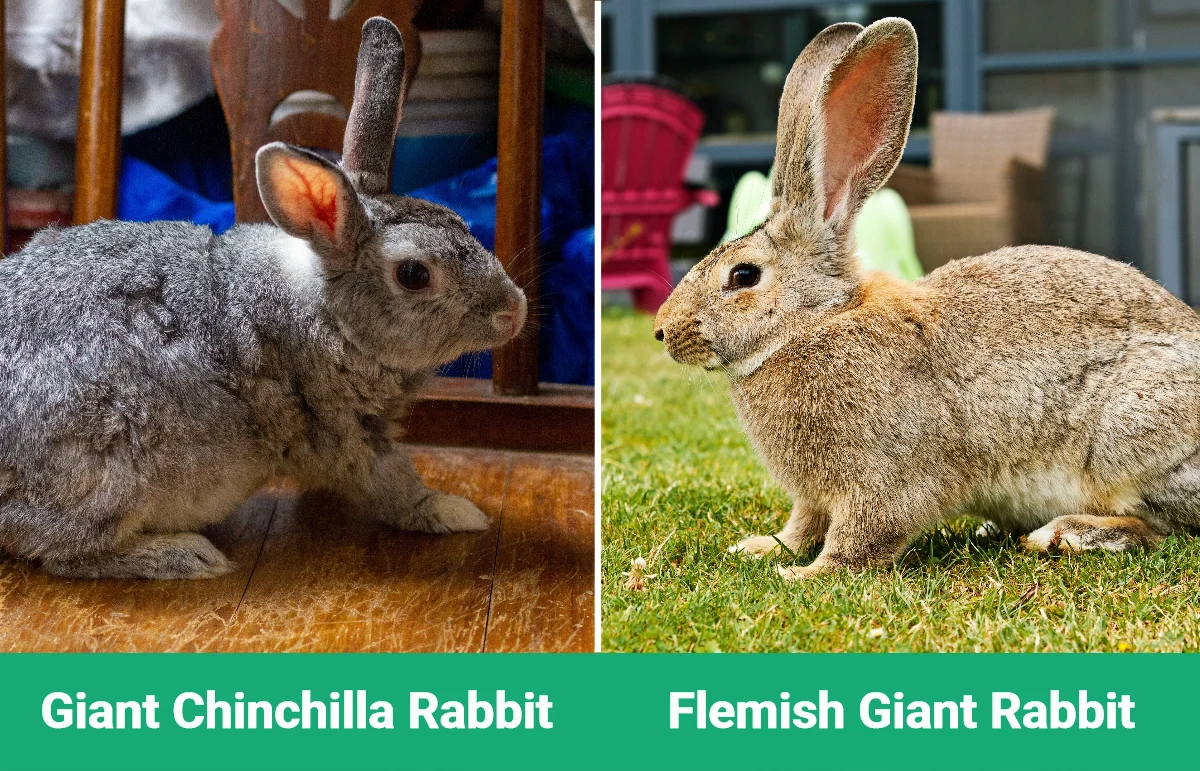
One of the first differences that you will notice between the Giant Chinchilla rabbit and the Flemish Giant is their hair. The Giant Chinchilla has what is called a flyback coat, which means their guard hairs are coarse and they bounce right back into place after being stroked against the grain. Flemish Giants have a rollback coat, which means their guard hairs are fine and slowly roll back into place after being stroked against the grain.
The Flemish Giant typically has a more arched body and longer legs than a Giant Chinchilla rabbit. Their heads also tend to be a little narrower and their ears a bit more pointed. Flemish Giants come in sandy, black, fawn, white, and grey colors. Giant Chinchillas are typically light grey or slate blue in color unless they are crossbred.
At a Glance

Giant Chinchilla Rabbit Overview

The Giant Chinchilla rabbit was introduced to the United States in the 1920s, and since then, they have become popular family pets, as well as farm and 4H animals. These huge rabbits are a little smaller than their Flemish Giant counterparts, but not by much. They love to jump, play, and explore, but they enjoy lounging around and napping just as much.
These rabbits display a calm temperament most of the time and will happily sit by watching their family members cook dinner or manage household chores without getting in the way. They can do well with children but should be introduced to them while still kits so they can get used to kids’ exuberant behavior. They can be litter trained, but not as easily as the Flemish Giant typically can.
Exercise
These large rabbits need room to stretch out, move around, and explore, whether inside or outdoors. However, they are not highly active, so they need no specific exercise routines. A toy or two, a big cage to hang out in, and the opportunity to get out and explore the house or the backyard for an hour or more each day should be enough.
Health & Care
The Giant Chinchilla rabbit does not have any hereditary health conditions to worry about. However, they are prone to a condition called flystrike, which happens when flies lay eggs in the coat of the rabbit, and the eggs hatch into maggots that eat the rabbit’s flesh. This is painful and can even be fatal.
Giant Chinchillas should have fully covered enclosed habitats to spend time in if they are living outdoors. The cover protects them from the sun so they do not overheat during the hottest periods of the day. A cage of a large dog kennel can be utilized as a habitat for indoor living. These rabbits should eat hay, rabbit pellets, and vegetables each day to stay healthy. They can enjoy fruits as snacks, but this should be limited to minimize the risk of unhealthy weight gain.
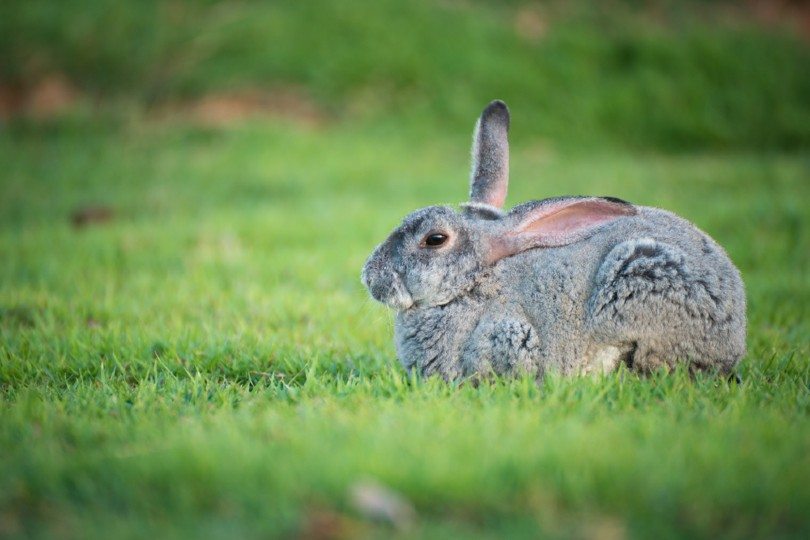
Suitability
The Giant Chinchilla rabbit can get nervous around loud and energetic kids, especially young ones who have a hard time keeping their excitement under control. They do best with older kids, adults, and seniors. They can get along with cats and some dogs if they are fully grown and out of the kitten and puppy stages.

Flemish Giant Rabbit Overview
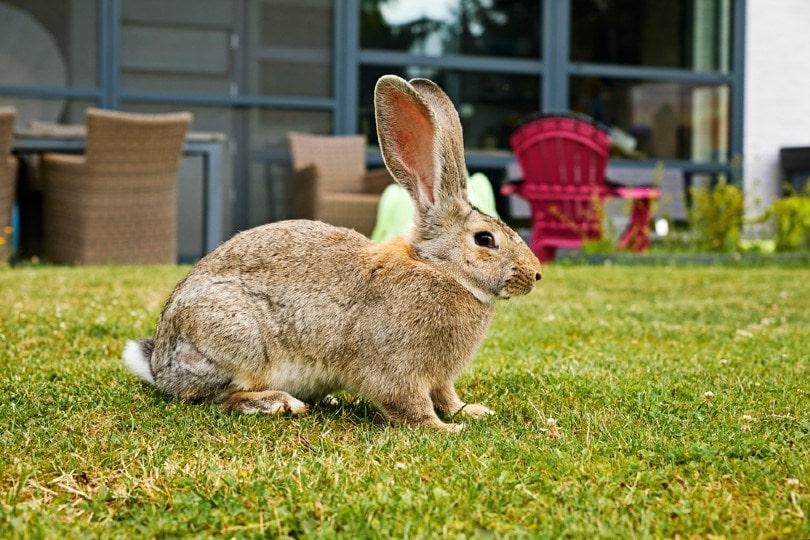
These are the gentle giants of the rabbit world. The Flemish Giant is low-key, curious, and intelligent. These rabbits tend to go with the flow if they are not feeling threatened, making them great pets for households with or without kids. However, it is important to keep in mind that the Flemish Giant does not put up with mistreatment or a strong hand and will quickly put up a fight, causing scratch and bite marks if they deem necessary.
Therefore, children should be supervised while spending time with a Flemish Giant rabbit. But when treated nicely, these rabbits offer nothing but love and are happy to act as a lap warmer. Flemish Giants love to be petted and rubbed. They will even follow their family members around the house when they want hands-on attention. They can get along well with other animals, including other rabbits, guinea pigs, cats, and dogs.
Exercise
Flemish Giants seem lazy, but they need a great deal of exercise during the day and should have access to plenty of space to roam. If living outside, they should have access to a completely fenced yard that is safe from loose dogs, not just a cage. If living indoors, they should have access to an entire room, if not the whole house, to roam around in during their waking hours. Luckily, they can be litter box trained, so owners do not have to worry about dealing with droppings around the home. Indoor rabbits can spend supervised time on the porch or in the yard to get sun and extra leg space.
Health & Care
These giant rabbits are generally healthy, but there are a few health conditions that they are prone to and that can develop at any time throughout their life.
Regular visits to the veterinarian will help ensure that any of these conditions are caught early so they can be effectively treated. These rabbits should not be exposed to temperatures higher than 70 degrees Fahrenheit for long periods. They need a large, enclosed habitat to spend their downtime in that is outfitted with wood shavings or straw, fresh water, and a comfortable bed to sleep in.
Hay and rabbit pellets are this rabbit’s main source of calories and nutrition. They can enjoy leafy greens, carrots, and other vegetables daily. As for grooming, this rabbit breed has short hair, so they only need to be combed or brushed once a week. They do shed their hair twice a year, during the spring and fall months. They may need to be brushed more often during these times. If they do not get enough outdoor exercise, their nails may need to be trimmed every few weeks.
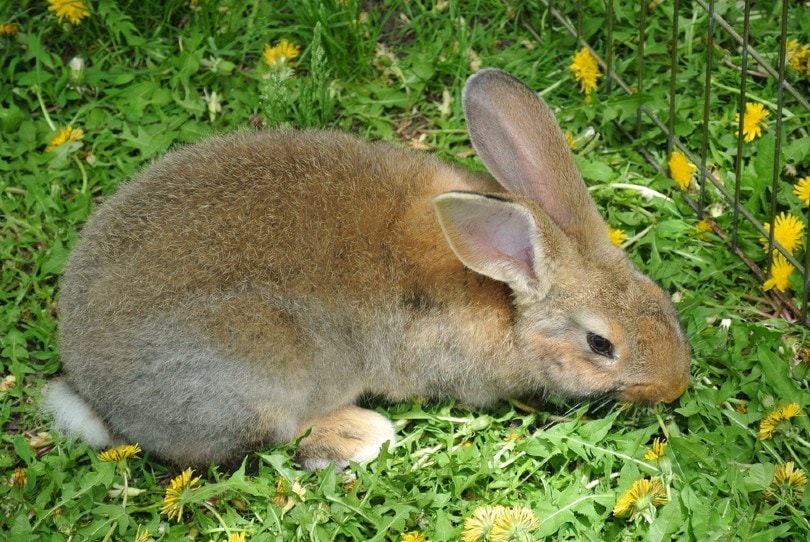
Suitability
The Flemish Giant is suitable for those who have a great deal of room to share and who do not mind big fluffy animals lounging around on their laps. Families with older children and friendly cats or dogs can provide fun-loving homes for these rabbits. They prefer spending quality time with their family members rather than being alone outside or stuck in a cage all day.

Final Thoughts
Both the Giant Chinchilla rabbit and the Flemish Giant are cuddly, cute, and huge. They do not cause havoc, and they are affectionate with their well-balanced family members. However, there are a few differences between the two rabbit breeds to consider before deciding on one to adopt for your household. No single pet is right for everyone. Choosing a breed should depend on your family’s specific preferences and expectations.
Which rabbit breed do you think would be the best fit for you? Let us know in the comments!
See Also:
- Flemish Giant Rabbits For Sale: Breeders List in the United States
- Continental Giant Rabbit vs. Flemish Giant: Differences Explained (With Pictures)
Featured Image Credit: Top – Mary Swift, Shutterstock | Bottom – Eric Isselee, Shutterstock









